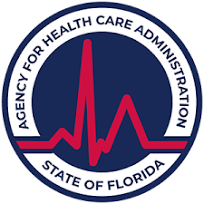Addiction and mental illness create a veritable hurricane of negative emotions. Many people struggle to handle these overwhelming feelings of anxiety, depression, and hopelessness with healthy coping mechanisms. If you’ve never been taught how to regulate your emotions, deescalate stress, or practice self-care, you may seek out other outlets for this pain. For this reason, many people turn to self-harm. Today, in honor of National Recovery Month, we want to explore the factors that drive adults – particularly women – to purposefully injure themselves.
Types of Self-Harm
Self-harm, or nonsuicidal self-injury (NSSI), is defined as the deliberate infliction of physical pain without suicidal intent. The methods by which someone hurts themselves vary from person to person. Common types of self-harm include:
- Cutting
- Burning
- Hitting (punching themselves, banging their head, or striking objects)
- Scratching
- Picking at scabs or acne
- Piercing the skin (with safety pins, hairpins, or other household items)
- Pulling out hairs (different from compulsive trichotillomania)
While self-harm itself is an inherently secretive act, this behavior is often given away by obvious signs. For example, even if a person hides scars or new wounds associated with cutting, others will probably notice that they are constantly wearing long sleeves and many bracelets, even in inappropriate scenarios (like a hot summer day or formal event).
Symptoms of NSSI include:
- Recent burns, scratches, cuts, or bruises
- Sharp objects in the person’s room
- Covering areas of the body, even when it would be uncomfortable to do so
- Increased isolation and loneliness
- Difficulty relating to others
- Instability and impulsivity (in both emotions and behaviors)
- Feelings of worthlessness or hopelessness
- Grappling with one’s personal identity
Why Do Women Self-Harm?
Research published by the American Psychological Association has found that women are more likely to engage in cutting. The risk increases for women of sexual minority status; the same study found that 47% of bisexual women surveyed have participated in self-injurious behavior. But why are women driven to harm themselves?
On average, women deal with many issues that men do not experience. Discrimination, poor self-image, bullying, eating disorders, familial and cultural pressure, and sexual trauma may all lead to NSSI.
Some factors are mental, not environmental. For many, self-harm stems from emotional dysregulation. This is defined as a difficulty in distinguishing between different feelings or controlling one’s responses. A person with this issue may exhibit extremely strong reactions to stimuli – one snide comment could cause them to skip over “sad” and land squarely in the realm of “devastated,” for example. Signs of this negative pattern include high levels of shame, angry outbursts, severe anxiety or depression, excessive substance use, and self-harm.
Individuals who struggle with emotional dysregulation have a hard time removing themselves from negative emotional states. They are perfectionists who often find themselves locked in conflict with others.
This emotionality can stem from childhood trauma or neglect, but it can also accompany mental illness and substance abuse.
The Role of Addiction
Substance abuse and NSSI are strongly linked. Women with a history of depression, anxiety, disordered eating, and trauma are more likely to develop substance use disorders. They’re also more likely to self-harm. We have learned that each of these conditions predisposes a person to the other.
First, women who regularly abuse substances are more likely to hurt themselves. Being under the influence of drugs or alcohol reduces a person’s ability to think critically. Impulsivity increases, heightening the risk of snap, out-of-character decisions. Additionally, ongoing substance use causes a person’s self-worth and emotional stability to deteriorate. Their moods are much more unpredictable due to the influence of uppers (stimulants) or downers (depressants). Together, these factors can result in severe self-injury.
Conversely, addiction can also be a product of self-harm. Substance use can be an unhealthy coping mechanism for women who are already dealing with feelings of worthlessness and shame. In these cases, drinking and drug use may serve as a way to numb severe depression or self-hatred. These activities are also common “punishments” to inflict on oneself as a type of self-harm.
Regardless of the reasons behind a woman’s NSSI, it is important to seek help as soon as the issue is identified.
Help for Nonsuicidal Self Injury
Augustine Recovery provides assistance for women struggling with self-harm. In the event of any self-harming incident, we immediately notify our clinical director and partner with local mental health providers for treatment.
We also have effective protocols in place for women who currently have a plan for suicide. In these instances, we provide resources for the patient to be stabilized prior to admission.
We’re no strangers to self-harm and addiction. It seems like every day, someone enters our facility with a mention of suicidality. In many cases, these women don’t want to commit suicide – they are instead dealing with a chronic hopelessness catalyzed by years of substance abuse. In these instances, a women-only addiction treatment program can help.
At Augustine Recovery, we offer hope and a path to healing. Contact us for information about our one-on-one counseling services.







